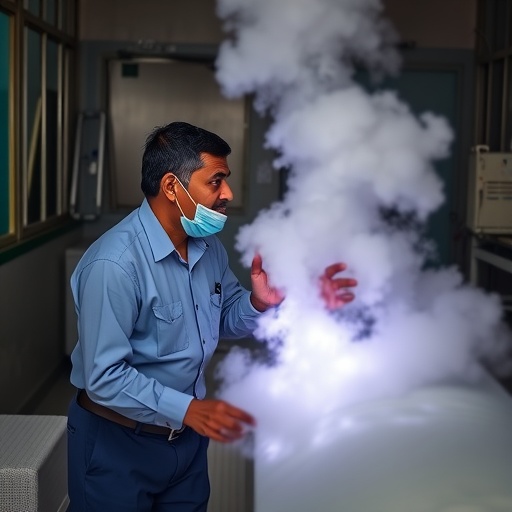May 16, 2018 – For patients with sepsis, a serious infection causing widespread inflammation, immediate treatment is essential to improve the chances of survival. An updated "Hour-1 Bundle" of the international, evidence-based guidelines for treatment of sepsis is introduced in the June issue of Critical Care Medicine. The official journal of the Society of Critical Care Medicine (SCCM), Critical Care Medicine is published in the Lippincott portfolio by Wolters Kluwer.
The 2018 update of the Surviving Sepsis Campaign (SSC) focuses on five treatment steps that healthcare professionals should initiate within the first hour after recognizing sepsis. "Like multiple trauma, heart attack, or stroke, sepsis is a medical emergency," comments Mitchell M. Levy, MD, MCCM, of Brown University School of Medicine, lead author of the latest SSC update. "Our revised Hour-1 Bundle reflects the clinical reality at the bedside of seriously ill patients with sepsis or septic shock–with the explicit intention of beginning resuscitation and management immediately."
Update to SSC Bundle Aims to Further Improve Survival for Patients with Sepsis Sepsis is a common and potentially life-threatening condition, occurring when the immune system mounts an overwhelming inflammatory response to infection in the blood or elsewhere in the body. Septic shock occurs when sepsis leads to a sharp drop in blood pressure and other metabolic abnormalities, with a risk of progression to organ failure.
The SSC is a global cooperative effort to improve treatment of sepsis and reduce its associated high mortality rate. The first SSC treatment bundle was introduced in 2004, followed by frequent updates in response to new evidence. Studies have shown significant reductions in the risk of sepsis-related death after implementation of the SSC guidelines.
Reflecting the latest evidence, the Hour-1 Bundle highlights five steps that healthcare professionals should begin as soon as sepsis is recognized:
- Measure the blood lactate level. A high lactate level may indicate that the tissues are not getting enough oxygen from the blood and may identify a patient at higher risk of further deterioration.
- Perform blood cultures to identify the cause of the infection. Blood samples should be taken before antibiotics are administered, if possible.
- Administer broad-spectrum antibiotics that are active against the causative organism.
- Start intravenous fluids. Fluid resuscitation is an essential step to stabilize the patient's condition.
- Administer vasopressors to raise blood pressure. This is a critical resuscitation step in patients with septic shock.
"There is no reason to delay treatment for patients with sepsis and septic shock," Dr. Levy comments. "Recognizing the urgent need to treatment, clinicians must (and many already do) begin treatment immediately, rather than waiting for 3 or 6 hours in these critically ill patients."
The authors point out that the new revision is based on the 2016 SSC guidelines update, which provides further discussion and evidence related to each step and to comprehensive management of sepsis. They also note some important gaps in current knowledge, including the need for further studies in important subgroups such as patients with burns and compromised immune function.
Dr. Levy and coauthors emphasize that the Hour-1 Bundle should be implemented in emergency departments, intensive care units, and throughout the hospital "as the next iteration of ever-improving tools in the care of patients with sepsis and septic shock as we all work to lessen the global burden of sepsis."
###
The SSC is a joint collaboration between SSCM and the European Society of Intensive Care Medicine (ESICM), committed to reducing mortality and morbidity from sepsis and septic shock worldwide. The latest update is simultaneously published in Intensive Care Medicine, the official journal of the ESICM.
Find the new Hour-1 Bundle at SuvivingSepsis.org/Bundle.
Click here to read "The Surviving Sepsis Campaign Bundle: 2018 Update."
DOI: 10.1097/CCM.0000000000003119
Note to editors: For further information, contact Curtis Powell, Director of Marketing and Communications for SCCM: phone +1 847 827-7282 or +1 312 285-6551; or email [email protected].
About the Society of Critical Care Medicine
The Society of Critical Care Medicine (SCCM) is the largest nonprofit medical organization dedicated to promoting excellence and consistency in the practice of critical care. With members in more than 100 countries, SCCM is the only organization that represents all professional components of the critical care team. The Society offers a variety of activities that ensures excellence in patient care, education, research, and advocacy. SCCM's mission is to secure the highest quality of care for all critically ill and injured patients. Visit http://www.sccm.org for more information. Follow @SCCM or visit us on Facebook.
About Critical Care Medicine
Critical Care Medicine is the premier peer-reviewed, scientific publication in critical care medicine. Directed to those specialists who treat patients in the intensive care unit and critical care unit, including chest physicians, surgeons, pediatricians, pharmacists, pharmacologists, anesthesiologists, critical care nurses, and other healthcare professionals, Critical Care Medicine covers all aspects of acute and emergency care for the critically ill or injured patient. Each issue presents critical care practitioners with clinical breakthroughs that lead to better patient care, the latest news on promising research, and advances in equipment and techniques. Follow @CritCare Med.
About Wolters Kluwer
Wolters Kluwer is a global leader in professional information, software solutions, and services for the health, tax and accounting, finance, risk and compliance, and legal sectors. We help our customers make critical decisions every day by providing expert solutions that combine deep domain knowledge with specialized technology and services.
Wolters Kluwer, headquartered in the Netherlands, reported 2017 annual revenues of €4.4 billion. The company serves customers in over 180 countries, maintains operations in over 40 countries, and employs approximately 19,000 people worldwide.
Wolters Kluwer Health is a leading global provider of trusted clinical technology and evidence-based solutions that engage clinicians, patients, researchers, and students with advanced clinical decision support, learning and research, and clinical intelligence. For more information about our solutions, visit http://healthclarity.wolterskluwer.com and follow us on LinkedIn and Twitter @WKHealth.
Media Contact
Connie Hughes
[email protected]
646-674-6348
@WKHealth
http://www.lww.com




